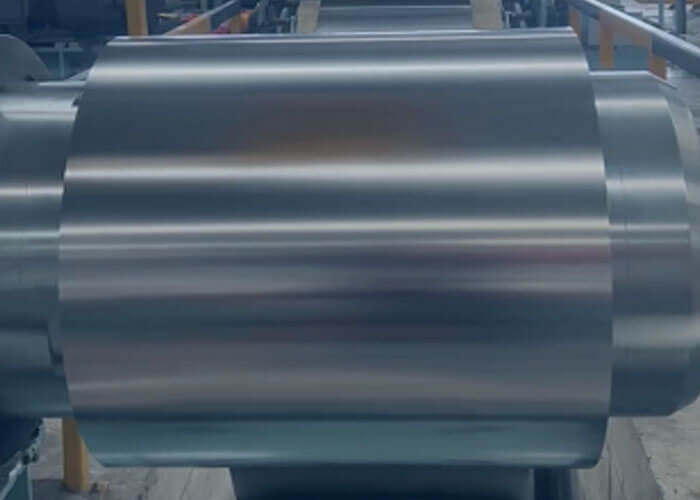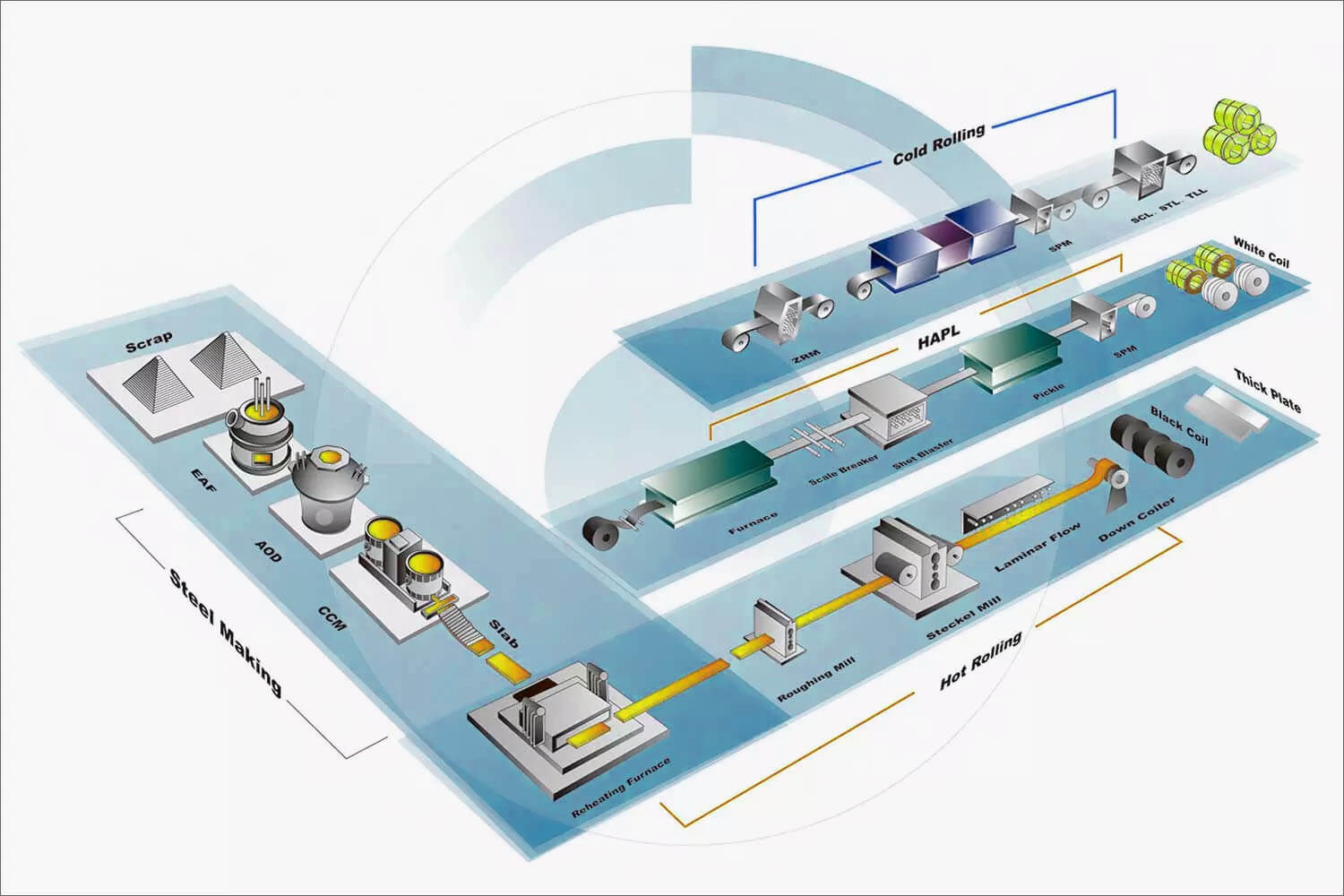301 Stainless Steel Coil

301 Stainless Steel Coil
301 stainless steel coil is a type of hardenable austenitic stainless steel with high strength, moderate corrosion resistance and good formability. It is the most widely used of all the austenitic stainless steel coils and is widely used in many industries as its properties make it an excellent choice for various applications.
The 301 grade coil has been known by many names over the years including SUS301, ASTM 301 or EN 1.4310.
301 Stainless Steel Coil Specifications
| Product Name | 301 stainless steel coil |
| Grades | 301/EN 1.4310/SUS301 |
| Hardness | Soft, Hard, Half Hard, Quarter Hard, Spring Hard as customer’s requirements |
| Thickness | 0.02mm-6.0mm |
| Width | 1.0mm-1500mm |
| Edge | Slit/Mill |
| Quantity Tolerance | ±10% |
| Paper Core Internal Diameter | Ø500mm paper core, special internal diameter core and without paper core on customer request |
| Surface Finish | NO.1/2B/2D/BA/HL/Brushed/6K/8K Mirror,etc |
| Packaging | Wooden Pallet/Wooden Case |
| Payment Terms | 30% TT deposit and 70% balance before shipment, 100% LC at sight |
| Delivery Time | 5-7 working days |
| MOQ | 200Kgs |
| Shipping Port | Shanghai/Ningbo port |
| Sample | The sample of 301 stainless steel coil is available |
301 Stainless Steel Coil Chemical Compositions
The chemical components of grade 301 stainless steel coil is summarized in the following table:
| Grade | C | Si | Mn | P | S | Cr | Ni | Mo |
| 301 | ≤0.15 | ≤1.00 | ≤2.00 | ≤0.045 | ≤0.030 | 16.00-18.00 | 6.00-8.00 | – |
301 Stainless Steel Coil Mechanical Properties
| Grade | EN Grade | Yield Strength Rp0.2(N/mm²) | Tensile Strength Rm(N/mm²) | Hardness | Vickers Hardness(HV) | Elongation A50% |
| 301 | 1.4310 | ≥205 | ≥520 | Annealed | ≥160 | ≥40 |

How About 301 Stainless Steel Coil Production Process?
Most people don’t know how the 301 stainless steel coils are made, instead, they always see a lot of stainless steel coils in steel plants or industrial fields, but the truth is making 301 stainless steel coils is not easy than you imagined.
Basically, there are following steps for 301 stainless steel coils production.
301 Stainless Steel Coil: The Ultimate Guide
301 stainless steel coils are used in a variety of applications, including construction, automotive, and consumer goods. The alloy is also used in marine environments and other environments where high strength and corrosion resistance are required.
What are the applications that 301 stainless steel coils can be used?
Due to the high strength and excellent corrosion resistance, quality grade 301 stainless steel coil is widely used for following applications.
- Industrial springs
- Conveyor belt
- Connectors
- Switch components
- Aircraft components
- Electric components
- Precision stamping parts
- Hardware
Features of 301 stainless steel coils
- Anti-corrosion
- High Strength
- Durable
- Low Maintenance
- Good Ductility
- Excellent Surface Quality
- Excellent for deep drawing with good ductility without intermediate annealing
What are 301 stainless steel coils surface finish?
Through different processing methods of cold rolling and surface reprocessing after rolling, the surface finish of 301 stainless steel coils can have different types.
The surface processing of stainless steel coils have NO.1, 2B, No. 4, HL, No. 6, No. 8, BA, TR hard, Rerolled bright 2H, polishing bright and other surface finishes, etc.
- NO.1: No. 1 surface refers to the surface obtained by heat treatment and pickling after hot rolling of the stainless steel strip. It is to remove the black oxide scale produced during hot rolling and heat treatment by pickling or similar treatment methods. This is No. 1 surface processing. The No.1 surface is silvery white and matt. Mainly used in heat-resistant and corrosion-resistant industries that do not require surface gloss, such as alcohol industry, chemical industry and large containers.
- 2B: The surface of 2B is different from the 2D surface in that it is smoothed with a smooth roller, so it is brighter than the 2D surface. The surface roughness Ra value measured by the instrument is 0.1~0.5μm, which is the most common processing type. This kind of stainless steel strip surface is the most versatile, suitable for general purposes, which is widely used in the chemical, paper, petroleum, medical and other industries, and can also be used as a building curtain wall.
- TR Hard Finish: TR stainless steel is also called hard steel. Its representative steel grades are 304 and 301, they are used for products that require high strength and hardness, such as railway vehicles, conveyor belts, springs and gaskets. The principle is to use the work hardening characteristics of austenitic stainless steel to increase the strength and hardness of the steel plate by cold working methods such as rolling. The hard material uses a few percent to several tens of percent of the mild rolling to replace the mild flatness of the 2B base surface, and no annealing is carried out after rolling. Therefore, the TR hard surface of the hard material is the rolled after cold rolling surface.
- Rerolled Bright 2H: After the rolling process. the stainless steel strips will be processed bright annealing. The strip can be fast cooled by the the continuous annealing line. The traveling speed of the stainless steel strip on the line is around 60m~80m/min. After this step, the surface finish will be 2H rerolled bright.
- No.4: The surface of No. 4 is a fine polished surface finish that is brighter than the surface of No. 3. It is also obtained by polishing the stainless steel cold-rolled stainless steel plate with 2 D or 2 B surface as the base and polishing with abrasive belt with a grain size of 150-180# Machined surface. The surface roughness Ra value measured by the instrument is 0.2~1.5μm. NO.4 surface is widely used in restaurant and kitchen equipment, medical equipment, architectural decoration, containers, etc.
- HL: HL surface is commonly called hairline finish. Japanese JIS standard stipulates that 150-240# abrasive belt is used to polish the continuous hairline-like abrasive surface obtained. In China’s GB3280 standard, the regulations are rather vague. HL surface finish is mostly used for building decoration such as elevators, escalators, and facades.
- No.6: The surface of No. 6 is based on the surface of No. 4 and is further polished with a Tampico brush or abrasive material with a particle size of W63 specified by GB2477 standard. This surface has a good metallic luster and soft performance. The reflection is weak and does not reflect the image. Due to this good property, it is very suitable for making building curtain walls and building fringe decorations, and also widely used as kitchen utensils.
- BA: BA is the surface obtained by bright heat treatment after cold rolling. Bright heat treatment is annealing under a protective atmosphere that guarantees that the surface is not oxidized to preserve the gloss of the cold-rolled surface, and then use a high-precision smoothing roll for light leveling to improve the surface brightness. This surface is close to a mirror finish, and the surface roughness Ra value measured by the instrument is 0.05-0.1μm. BA surface has a wide range of uses and can be used as kitchen utensils, household appliances, medical equipment, auto parts and decorations.
- No.8: No.8 is a mirror-finished surface with the highest reflectivity without abrasive grains. The stainless steel deep processing industry also calls as 8K plates. Generally, BA materials are used as raw materials for mirror finishing only through grinding and polishing. After mirror finishing, the surface is artistic, so it is mostly used in building entrance decoration and interior decoration.
What are 301 stainless steel coils edges?
Mill edge is a non-trimmed edge appearance after hot or cold rolling and annealing/pickling process. It usually leaved an irregular pinhole line on the edge side around 10mm to 15mm.
Slit/slitting edge means we will trim irregular pinhole line on our slitting machine.
How to buy 301 stainless steel coil from China?
Stainless steel coil is widely used in the field of industry and construction, and it has a bright future in the market.
As we know, stainless steel coil is made by rolling and drawing the steel strip so that it will become a coil with a circular cross section and different diameter.
There are many factors influencing the quality of stainless steel coils, such as production process, material selection and processing technology.
Therefore, if you want to buy stainless steel coils at lower price with high quality and good service from China suppliers, you need to know how to buy stainless steel coils from China firstly.
First of all, you should choose a reliable supplier who can provide good quality 301 stainless steel coils products at competitive prices. Then you can negotiate with them on price and other terms until reaching an agreement.
Secondly, you need to check whether they have advanced production equipment or not because if they do not have advanced equipment for producing various kinds of coils including stainless steel coils or if their production capacity is limited then it would be difficult for them to supply high quality products at competitive prices all year round.
Thirdly, it is better to visit their factory by yourself and check the production line and warehouse by yourself. It will be great if you can check their production process and production equipment. Because it is very important for you to know how they control the quality from process till delivery.
What is the standard sea packaging of 301 stainless steel coil?
- Standard export sea packaging:
Waterproof Paper Winding+PVC Film+Strap Banding+Wooden Pallet or Wooden Case; - Customized packaging as your request (Logo or other contents accepted to be printed on the packaging);
- Other special packaging will be designed as customer’s request;
Eye to wall and eye to sky are both available; - By International Express: DHL/UPS/FEDEX/EMS and our own express line;
- By air or By sea;
- Shipping port: Shanghai, Ningbo or as your request.











